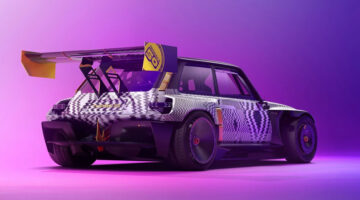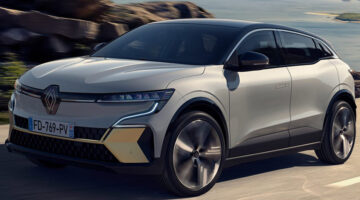What does throw me though is the 70/200 lens. It’s a weighty git, and wielding it takes some getting used to, as does the zoom function. When setting up a shot with the 24/70, standing between 10 and 15 feet away frames the subject nicely. With the 70/200, I find I have to walk nearly double this to get the whole of the Renault into frame, let alone place it where I want it. This does mean though that I can (attempt to) use objects in the foreground much more artistically than I have been able to do previously: blurred out rocks in the foreground for example give the shots a great look. It also means, if I manage the zoom properly, I can capture kilometres of rocky terrain behind the Duster with more detail than if I were using a smaller lens.
The amount of time it’s taken us to find this location is also – rather ironically – playing into our hands. Even though it’s pushing 45 degrees, the natural light at mid-afternoon is pretty much bang on: not too sharp that the vehicle details are washed out; not too dissipated that I lose them entirely. What I do have to look out for though are ‘hot spots’, light flares that reflect off the paintwork and leave the pictures overexposed. And ruined.
To fully emphasise the difference between the lenses, Arun opts to stick with the 24/70 lens we used on the VW Passat Sport, and there is a surprisingly big difference. Whilst details of the rock face and snippets of the background shine through in Arun’s shots (on page one), so too does the Duster. In my enthusiasm to capture as much of the backdrop as possible, my shots (on page two) take in much more of the mountain range but on occasion swings the ratio from 50/50 to 90/10, landscape/subject. In some of my shots, the Duster is resigned to the shadows, a fail in automotive photography.
My afternoon with the 70/200 lens has taught me a lot though, and combined with the lessons I took from the first installment, I’m beginning to understand much clearer the intricate balance required with photography. You’ll notice that this time I opted to leave the Duster parked in the same place, saving me time and allowing me to explore the location much more thoroughly. I’m also starting to understand that a car can be shot well regardless of location if natural light is used properly and if my framing is accurate. What I find most interesting though is the manner in which different lenses can/should be used: just because I can capture ten kilometres of open terrain doesn’t necessarily mean I should.
Stick around. These lessons will be important when I face my next test: Lighting.
– If you want to check out a full crankandpiston photoshoot of the Renault Duster, just click HERE.



